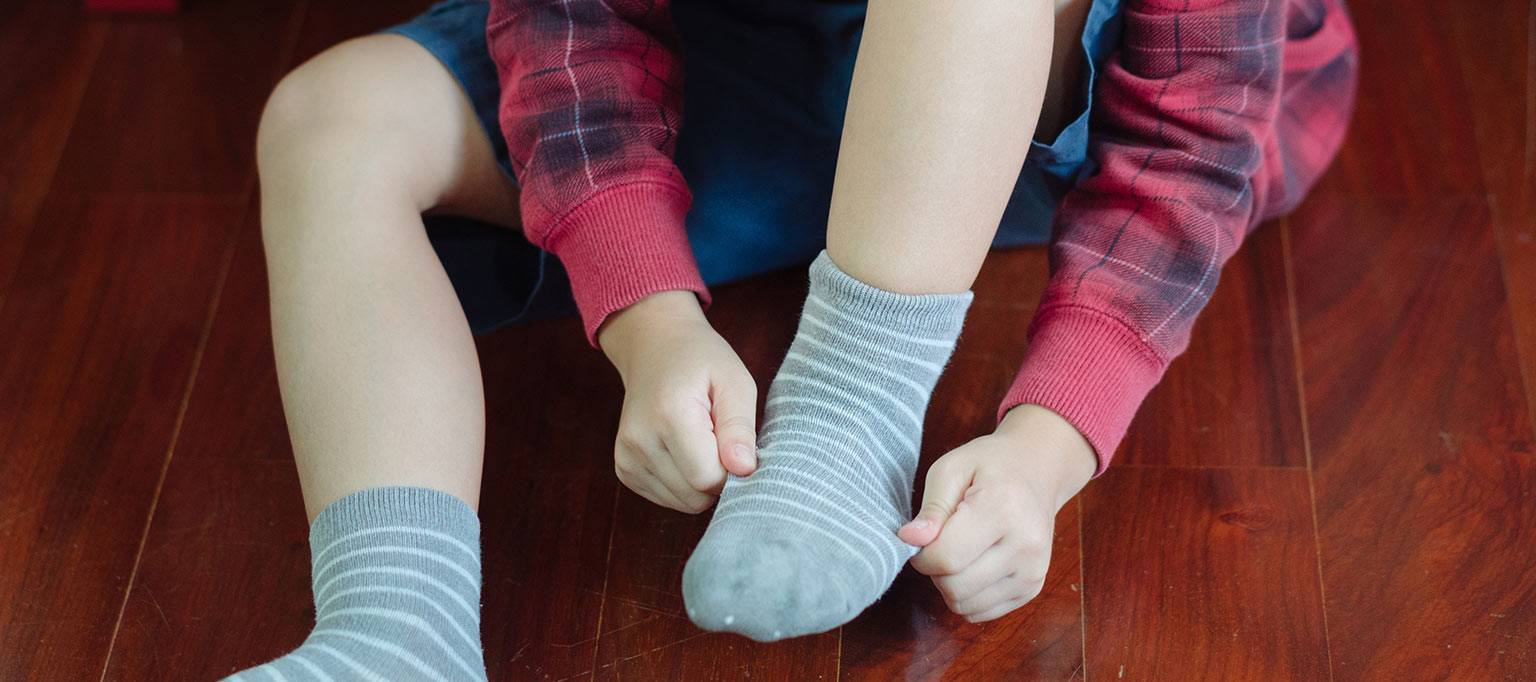Dressing

Dressing Tasks
Positioning
Initially, it may be beneficial to sit down on a chair or sat on the floor up against a wall/stable surface to provide support when dressing. As your child progresses with dressing skills, encourage them to complete small or all of this when standing.
Organising Clothes
Activities
- Encourage your child to look for emblems/pictures on the front or back of their t-shirt or jumper to identify the right way for dressing.
- Place coloured dots in the labels to identify the front or back of the t-shirt or jumper.
- Place half of a picture or coloured dots in shoes to help your child identify right and left.
- Practice reaching into a sleeve or trouser leg and pulling this out to ensure the garment is in the correct position.
Putting on a jumper or t-shirt
Activities
- Practice with larger items or looser clothing, e.g. pyjamas.
- Ensure the item is the correct way round for dressing.
- Start by working on undressing as this is often easier. Focus on backwards chaining: help your child to remove the arms and then encourage them to pull the clothing over their head. When they improve with this, encourage them to remove one arm and then pull the clothing over their head until they are completing this independently.
- To put on a jumper/t-shirt; start by encouraging the child to place their head through the hole and then assist them to push their arms through. Gradually encourage them to put their head through and then one arm through the correct sleeve, until they are able to do all stages independently.
- It may be easier to dress in front of a mirror to provide a visual clue.
- Practice dressing in the evening or on the weekends so that they have more time to complete the task.
Putting on and removing socks
Activities
- Start by using smaller socks e.g. trainer liners or a larger adult sock.
- Practice using hair scrunchies or elastic bands to stretch over the foot and pull up.
- Practice backward chaining; place the sock over your child’s foot and encourage them to pull over the heel to start with, then place over the toes and encourage them to pull the socks over the foot and heel.
- To put the sock on, encourage your child to roll up the sock, positioning their thumbs inside the sock and using their index finger to gather the material. Place the rolled-up sock into the toes and pull along the foot. Ask your child to place their thumbs either side to pull over the heel or to use on hand to pull the remaining sock over the heel at the back.
- To remove the sock, roll the sock all the way down over the heel and pull off.
- Using socks with coloured toes and heels can be helpful to show your child the correct position to ensure it is on correctly.
Fastenings
Activities
Buttons:
- Practice fastening buttons on adult clothing where these may be larger and they can work on the technique.
- Start feeding the button through the hole and encourage your child to pull this through, so they can feel the success.
- Encourage your child to fasten the buttons they can see on their clothing, e.g. bottom buttons on a school shirt and as they become more confident encourage them to increase the number.
- Fastening buttons in front of a mirror may be useful to offer a visual cue.
Zips:
- Encourage your child to practice zips on backpacks and pencil cases to learn the grasp.
- Encourage your child to unzip their coat completely.
- Work on connecting the zips, pushing the zip so this is fully connected before pulling up. It may be useful to practice this on a table with the coat/jumper in front of them to see this before practicing this when wearing the clothing.
- Placing a keyring or ribbon to the zip can assist with the grasp.
- Placing a coloured dot inside the connector can help to provide a visual cue.
Associated Services
Children’s Occupational Therapy Service